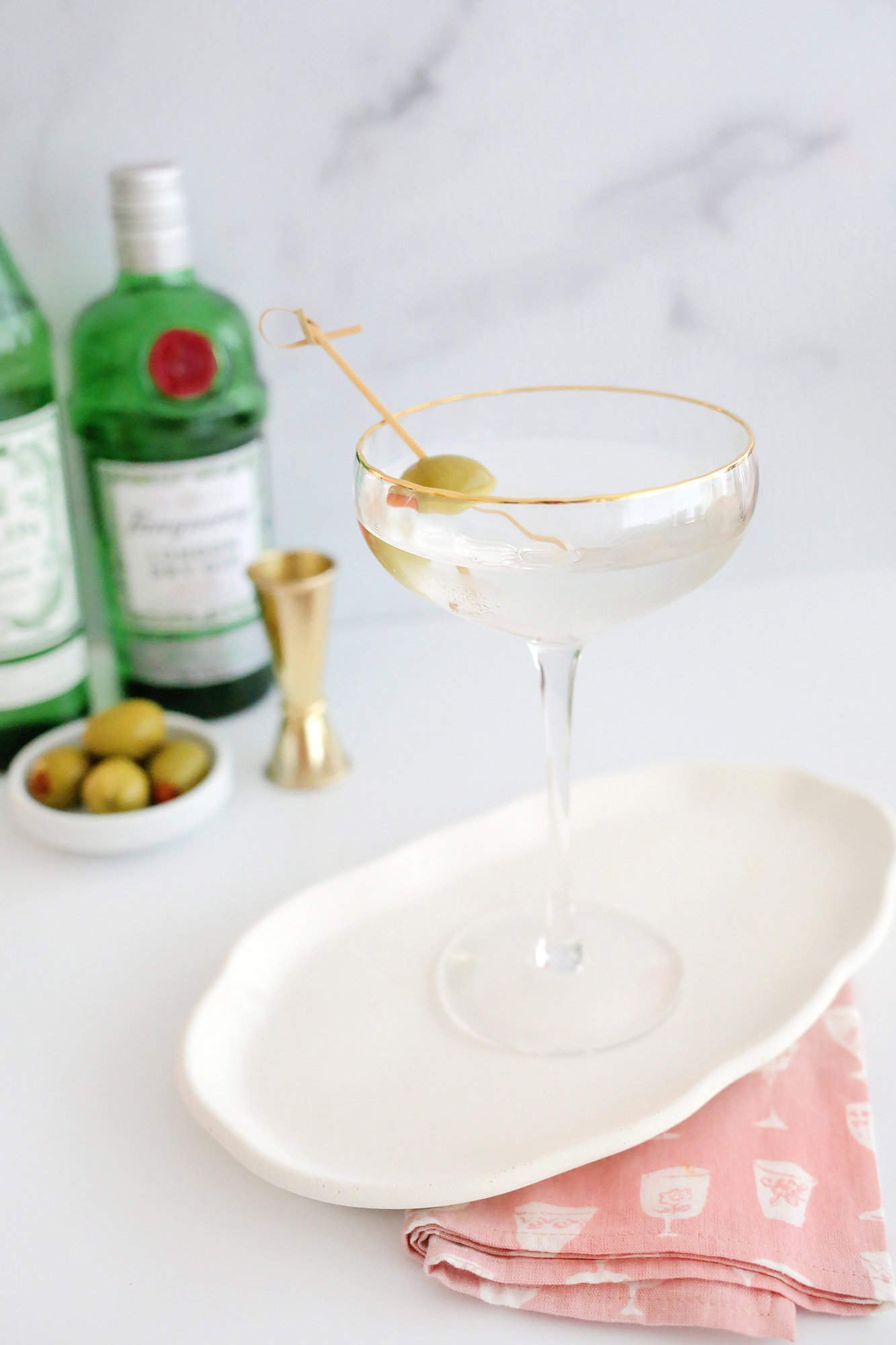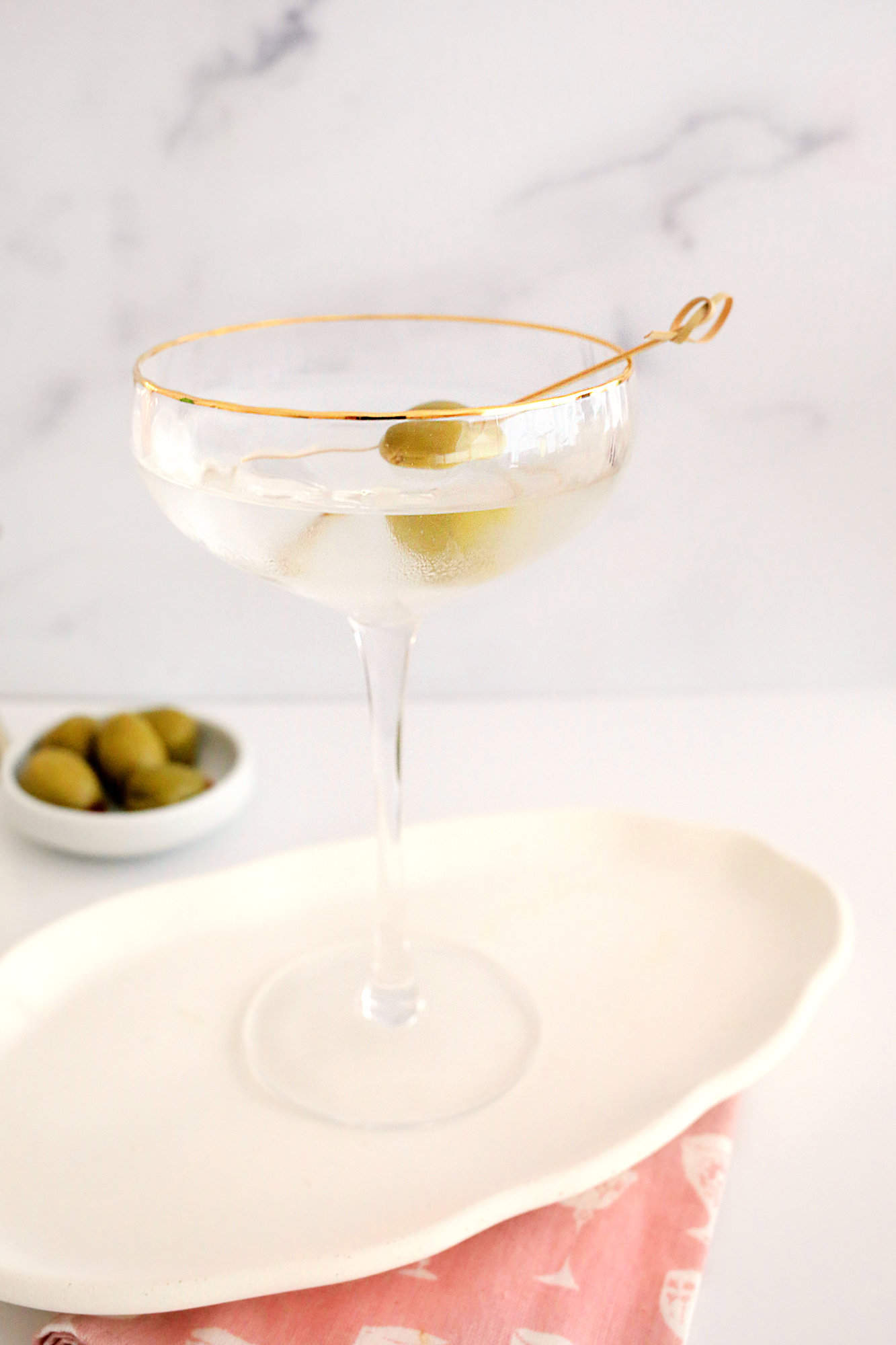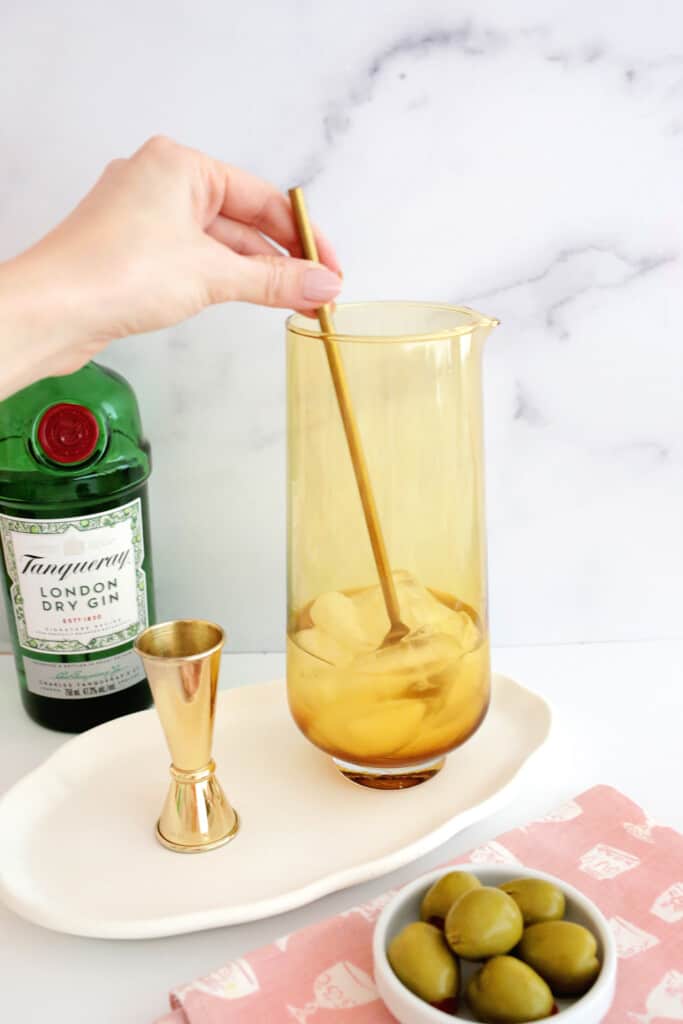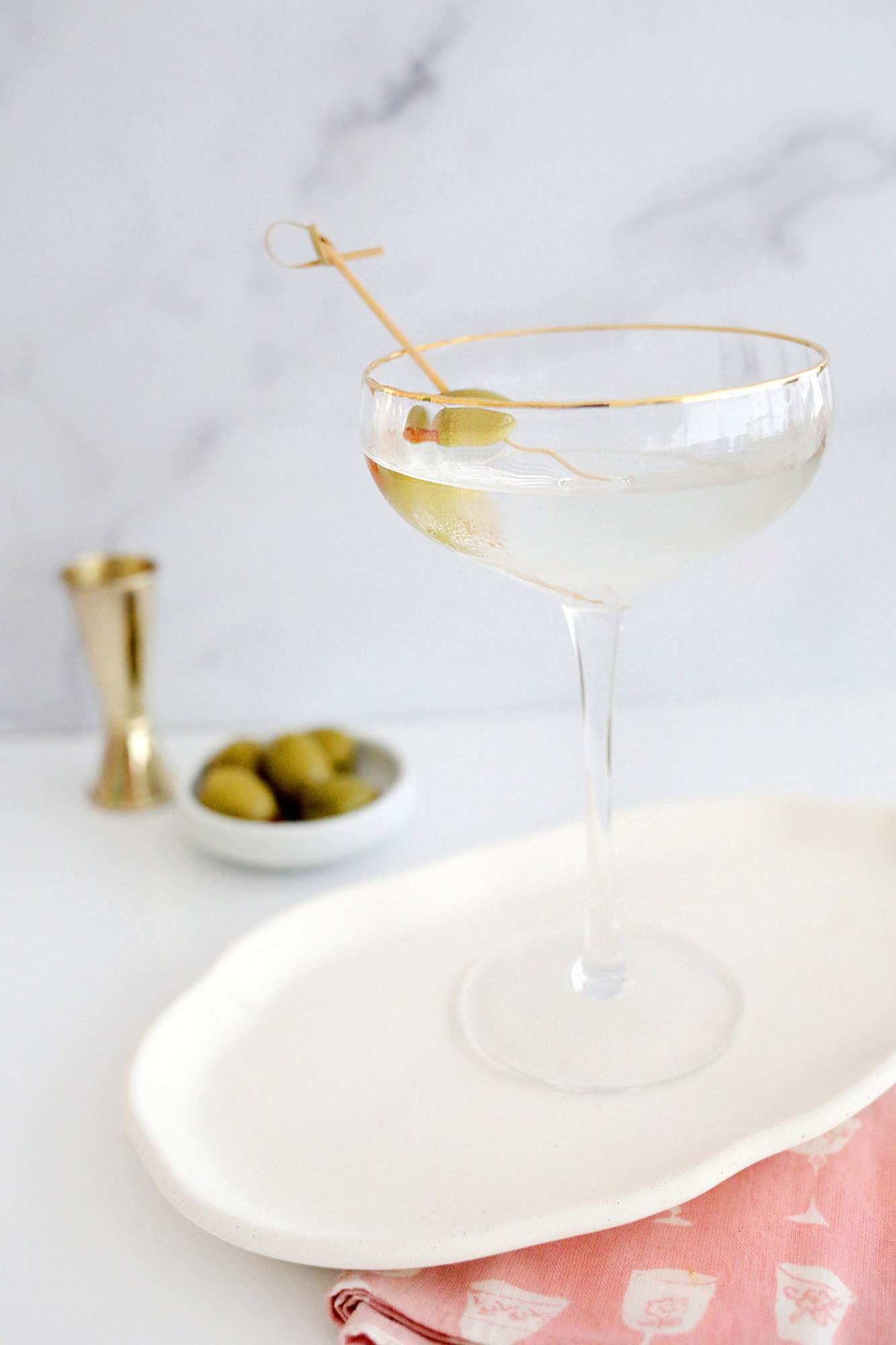The classic dry martini has been around for decades and it’s not going away anytime soon. This simple cocktail is made up of gin as a base with a splash of dry vermouth to add a little tartness to the drink. Make sure to serve this drink cold and you can make up your own mind on the shaken vs. stirred debate.
The origin of dry martinis is up for debate as some say it was concocted by Julio Richelieu in San Francisco in 1906, while others believe it was at the Knickerbocker Hotel in New York in 1911 by bartender Martini di Taggia. Whatever the case, the dry martini is a less sweet version of its classic martini predecessor. The dry version became popular during Prohibition as a way to mask the lesser quality taste of the bootleg gin that was available at the time.
Related: Vodka Martini Recipe (3 Ways!), Espresso Martini, Chocolate Martini Recipe, Lychee Martini

Do you use gin or vodka for a dry martini?
While gin is more commonly used for a dirty martini, it’s up to your personal preference to use vodka or gin as your base. A vodka-based version will have a smoother neutral flavor base while the gin’s stronger botanical flavor gives it a tart punch of flavor. Try both and see which you like best!
What type of gin is best for a dry martini?
Since the gin that you choose will be the main star of the drink, you want to choose a high quality gin like a London-style dry gin that will shine with its juniper flavor and woody notes. If you like a less juniper-forward gin, try choices like Hendrick’s or Aviation gin.

What makes a dry martini dry?
The term “dry” martini comes from comes from the fact that classic martinis were originally made with sweet vermouth and a sweet gin until the early 20th century. Switching to a dry gin and dry vermouth choice gives this martini its name. A dry gin doesn’t have any sweeteners added at the end of the distilling process and so it has a stronger herbal kick to the drink.
Dry also means a stronger proportion of higher-proof spirit to lower-alcohol mixer when describing cocktails (in this case that means much more gin than vermouth).

Ingredients
- Gin: The bulk of your drink will be made up with this so make sure that it’s a favorite of yours and high quality. Experiment with different choices to see which you like best!
- Dry Vermouth: Just a dash of a dry vermouth in the drink will add a lightly floral and tart flavor to the drink. You can also try out a sweet vermouth but dry versions tend to be the favorite.
- Olive or Lemon Peel Garnish (optional): If you want to doll up your martini a bit, don’t forget the lemon peel or olive garnish!


Directions
Add the gin (or vodka) and dry vermouth to a mixing glass filled with ice and stir until drink is fully chilled.
Use a strainer to pour into a chilled martini glass and garnish with lemon peel or olive skewer. Enjoy!

Tips for Making A Dry Martini
- You’ll want to get the perfect amount of ice melt to your drink as that little bit of water changes the flavor the longer you shake or stir your martini in ice, so experiment with different amounts of time you let it chill over ice to find the right ice melt ratio for you.
- Choose a lemon peel for garnish if you want to add a dry citrus note, or go for the olive if you want a more savory and salty addition.
- A 6:1 or 5:1 ratio are the classic gin to vermouth combos, but play around with your ratios to see if you like yours more on the “wetter” or “drier” side.

Serving Suggestions
- A dry martini is delicious next to an olive tray stuffed with a variety of fillings.
- Try serving these with our 5 Easy Crostini Appetizers.
Frequently Asked Questions
How do you chill a glass quickly?
If you don’t have time to chill your glass, simply fill the empty glass with ice and allow the glass to chill while you make your drink. Pour out the ice and add our cocktail when ready!
What’s the difference between a shaken and stirred martini?
While James Bond prefers his martini shaken not stirred, the main difference between the methods is that shaking the martini will add a few tiny ice chips to your drink. So if you don’t want it watered down at all, try stirring the drink instead of shaking before pouring into your glass.
Do you use bitters in a dry martini?
In the original martini, a dash of orange bitters was common but fell out of the favor with the drier variety. However, it is a favorite of some to add a dash of orange bitters to a dry martini, so give it a try!

Get our FREE recipe guide with our most popular recipes of all time!

Free Popular Recipe Guide
Our top 25 recipes of all time!
 Get the Recipe
Get the Recipe
Instructions
- Add the gin (or vodka) and dry vermouth to a mixing glass filled with ice and stir until drink is fully chilled.
- Use a strainer to pour into a chilled martini glass and garnish with lemon peel or olive skewer. Enjoy!
Notes
-
- You’ll want to get the perfect amount of ice melt to your drink as that little bit of water changes the flavor the longer you shake or stir your martini in ice, so experiment with different amounts of time you let it chill over ice to find the right ice melt ratio for you.
-
- Choose a lemon peel for garnish if you want to add a dry citrus note, or go for the olive if you want a more savory and salty addition.
-
- A 6:1 or 5:1 ratio are the classic gin to vermouth combos, but play around with your ratios to see if you like yours more on the “wetter” or “drier” side.
Nutrition
Nutrition Facts
Dry Martini
Amount per Serving
% Daily Value*
* Percent Daily Values are based on a 2000 calorie diet.
Notice: Nutrition is auto-calculated, using Spoonacular, for your convenience. Where relevant, we recommend using your own nutrition calculations.









